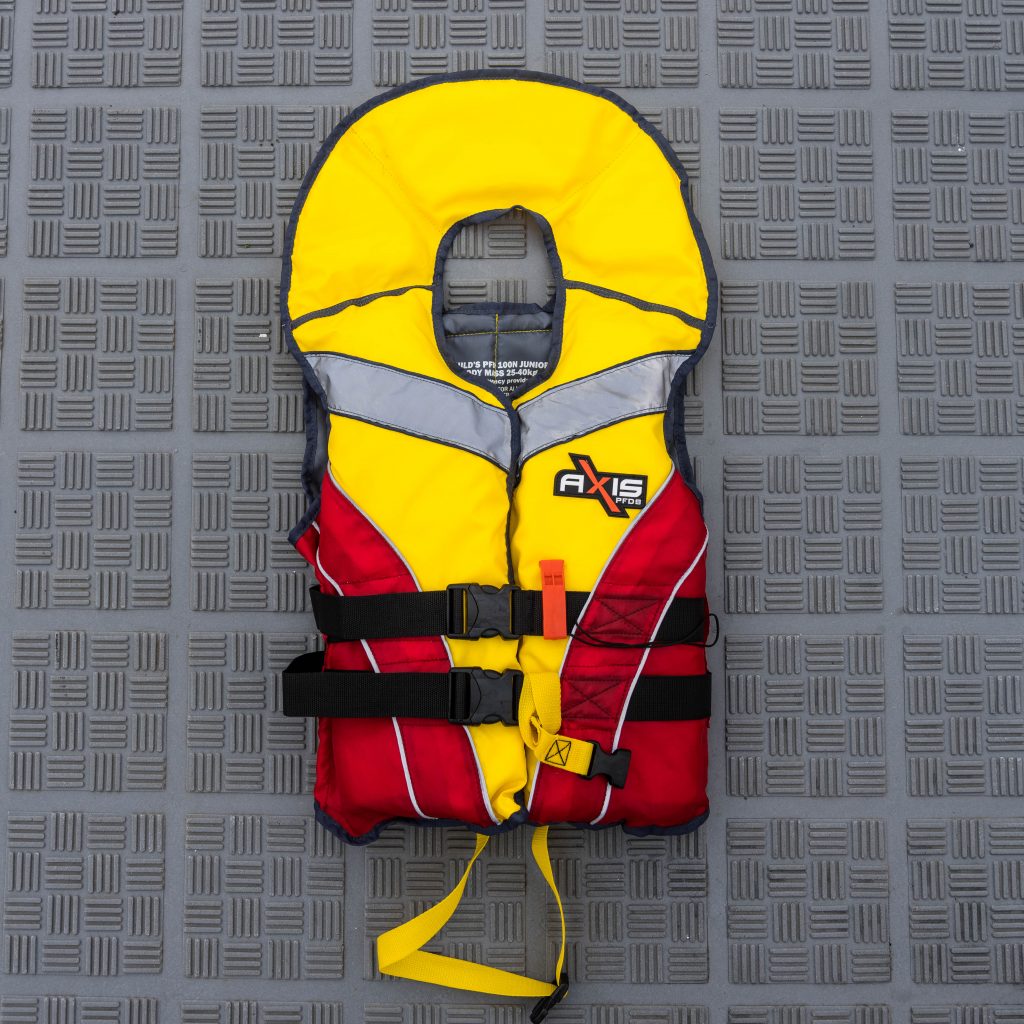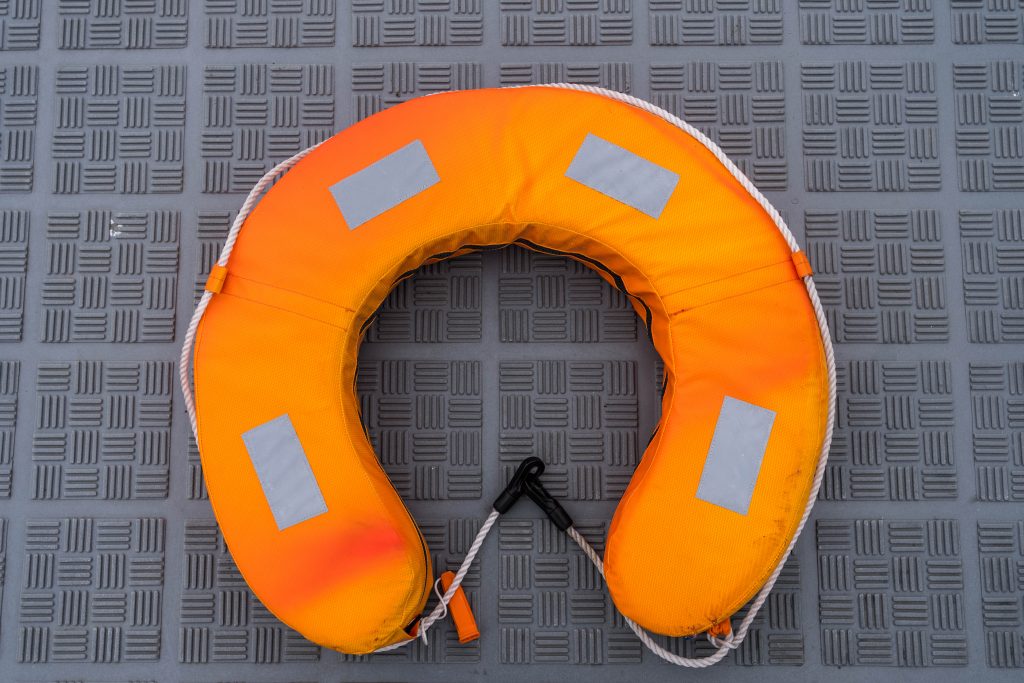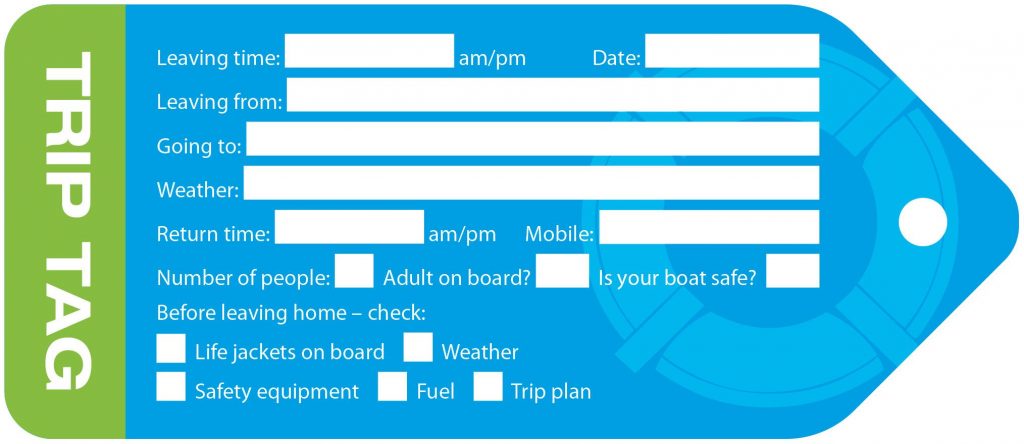Plan and practise strategies to promote health, safety and wellbeing (ACPPS054) – selecting and practising appropriate responses to promote safety in different situations.
The activities also encompass the General Capabilities, Critical and Creative Thinking.

Activity 1
Design a poster that displays and promotes being safe on the water. Make sure you include the following safety equipment: lifejackets, anchor, chain and rope, radio, bucket, flares and first aid kit. There must be an adult on board too!
Activity 2
There are 5 people in your boat and everyone needs somewhere to sit. Draw a small boat and then write about where you would have everyone seated. Why would you need to ensure that the boat is balanced?
Activity 3
Buoyancy – Does my boat float? Build a model boat that will float on the water. Your boat must be no bigger than 30 centimetres. Re-use a container like a milk carton. Your boat must be able to hold at least 200 grams (0.02kg). Use plasticine or similar to help you solve the problem.
- How did you balance the weight in the boat?
- How much weight does your boat hold before it sinks?
- How could you improve your boat?
Activity 4
Paddle Craft – There are 4 different levels of water conditions for paddling.
| Level 1 | Smooth and sheltered waters |
| Level 2 | Coastal waterways with easy access to shore |
| Level 3 | Ocean paddling with no immediate access to land |
| Level 4 | Surf and white water |
Research the following different types of paddle craft and what they can be used for.
- Stand Up Paddle board (SUP)
- Kayak


Draw each craft and show a person on board with their life jacket on.

Activity 1
Scavenger Hunt – Set up a scavenger hunt by hiding a selection of boating safety equipment. Use the following photos if you do not have the items.
You plan to go on your boat today since the weather is fine. Collect all the necessary items to help keep your boat safe. Write about each item and why you need to have it in your boat.













Activity 2
Interview – Prepare an interview with a friend who has been boating before. Ask them the following questions –
- What was the weather like when you went boating?
- What was the boat like?
- How did you stay safe on the boat?
- What did you take with you for the trip?
- Share your interview with your class when you are ready.
Activity 3
What is an EPIRB? – Emergency Position Indicating Radio Beacon (EPIRB) is a signalling device that, when activated, will send a digital radio signal to a satellite system. This signal is sent to a Rescue Coordination Centre. It tells them where the signal is coming from. This is an essential part of boat safety equipment.
Write a short narrative about an emergency situation when an EPIRB could be used.
Starting points:
(a) “It was a stormy day and the sea was wild ……”
(b) “We started our bushwalk when the sun was shining on our backs but ……..”

Activity 4
Watch the video Slip Slop Slap Seek and Slide.
Staying Sunsafe! It is a very sunny day with light winds, the perfect day for boating. Design a poster to show a sun-safe day.
What will you need to take with you to ensure that you are safe?
Draw and list at least 5 things.

Activity 1
Cold water and hyperthermia survival times.
| Sea Temperature Degrees Celcius | T-Shirt and shorts | Light wetsuit and life jacket |
| Survival Time | Survival time | |
| 0 | 2.3 hours | 3.6 hours |
| 4 | 2.9 hours | 4.8 hours |
| 8 | 3.9 hours | 7.2 hours |
| 12 | 6.1 hours | 12.2 hours |
| 16 | 11.6 hours | 23.5 hours |
Find the difference in survival times between the types of clothing worn. What did you find out? Make a graph to show your findings.

Activity 2
Tides – Tides are the rise and fall of the levels of the ocean. They are caused by the gravitational pull of the Sun and Moon as well as the rotation of the Earth. Tides cycle as the Moon rotates around the Earth and as the position of the Sun changes.
Launching and retrieving your boat
It is important to know about tides when boating. Launching your boat at or near high tide is far easier than launching at low tide.
Look at the table below and choose the times that you think are best for launching and retrieving a boat. Remember that tides change every day, so when you are boating, check the tides.
Hobart, TAS March 2022
| Tuesday, 1 March | Wednesday, 2 March | Thursday, 3 March | Friday, 4 March |
| Low – 12.28am | Low – 1.30am | Low – 2.46am | Low – 4.16am |
| High- 7.15am | High – 8.12 am | High – 9.09am | High – 10.13am |
| Low – 2.48pm | Low – 3.41pm | Low – 4.32pm | Low – 5.20pm |
| High – 9.15pm | High – 10.02pm | High- 10.52pm | High – 11.40pm |
Activity 3

What is a compass?
A compass tells us the direction we are travelling and can tell us where the wind is coming from.
Using the template provided, make your own compass. Add the following directions to your compass:
- North, South, East, West
- North East, South East, South West, North West
Explore using a real compass.
What do you notice?
Activity 4

High pressures and low pressures – making a Barometer
Areas of high and low pressure are caused by rising and falling air. As air warms, it rises, leading to low pressure at the surface. As air cools, it falls, leading to high pressure at the surface. Low pressure leads to unsettled weather conditions and high pressure leads to settled weather conditions. When you go boating, a barometer is a tool that indicates the type of weather you may encounter. If your barometer is showing a rapid change, this indicates the possibility of strong winds.
You will need:
- a glass jar,
- balloon
- pair of scissors
- thick elastic band
- drinking straw
- pens
- paper
- tape
Step 1 – Take your balloon and cut the neck of the balloon off.
Step 2 – Taking the bottom part of the balloon, stretch it over the neck of the jar. Pull it as tight as possible so the balloon fits flat with no dimple in the middle. Secure the balloon in place with a thick elastic band. This now creates a sealed vacuum in the jar.
Step 3 – Cut a straw at an angle to create a pointer.

Tape the straw to the centre of the balloon. Make sure the end of the straw ends in the centre.

Step 4
On a piece of card draw a sunshine towards the top and a rain cloud towards the bottom. Mark the paper in the middle where the straw currently rests.
Now step back and observe the barometer over time.
What do you observe? Does the Barometer change? Does it move a lot or a little? What happened to the straw when it is raining verses sunny?
The weather causes changes in air pressure and this changes the arrow direction allowing you to see the weather prediction.

Activity 1
Watersports Safety Plan – Wakeboarding, waterskiing and riding an inflatable tube are all so much fun.
Remember to:
- Always wear a lifejacket.
- Always have a designated spotter on board to observe the person being towed.
- Always be with an adult.
- Know the hand signals. Hand signals are important when towing someone.


Create a poster showing these signals that would help explain their importance when making your boating plan.
Activity 2
It is always important to tell someone about your boating trip before you go out on the water.
Trip Tag
Print out the trip tag. Imagine you are going out on a boat. Complete the trip tag with all the required information. Share your information with an adult.

